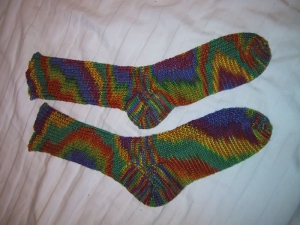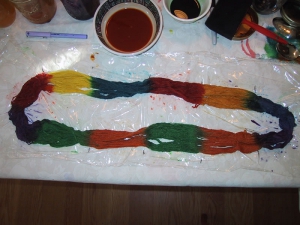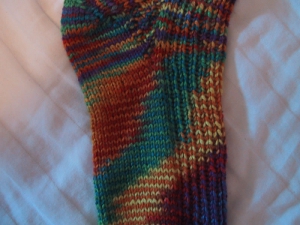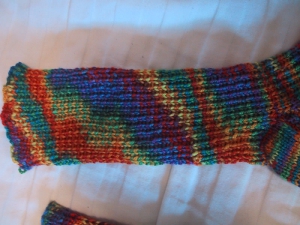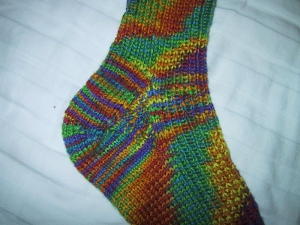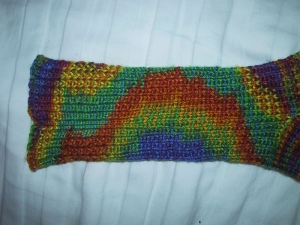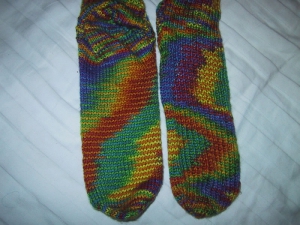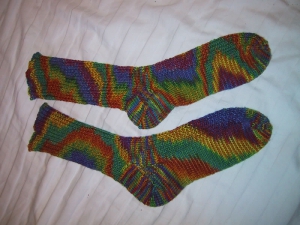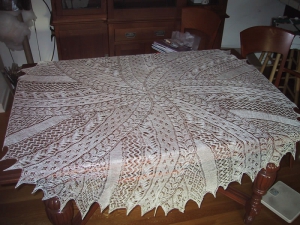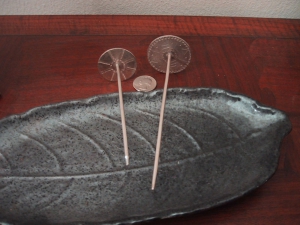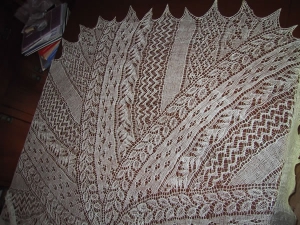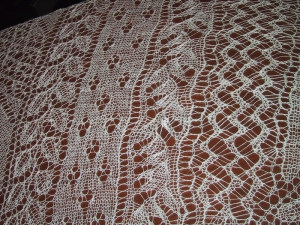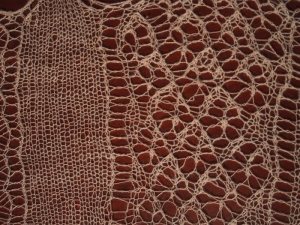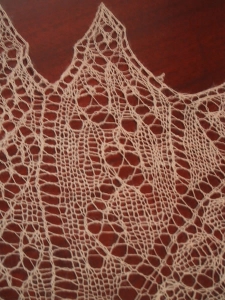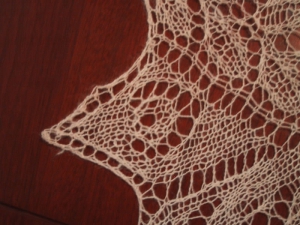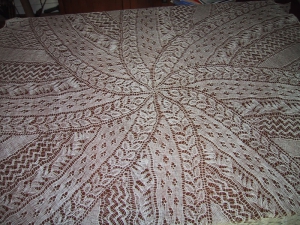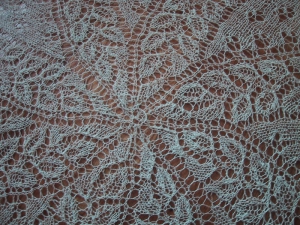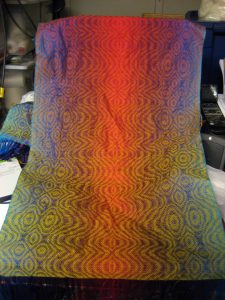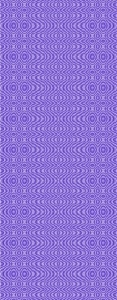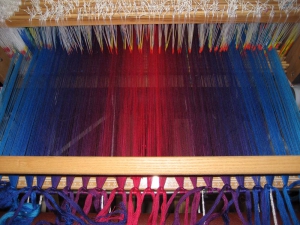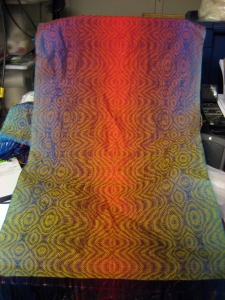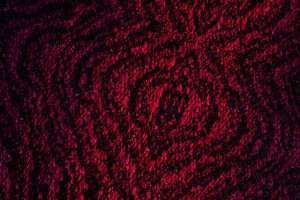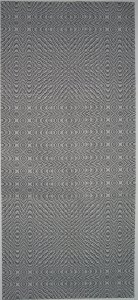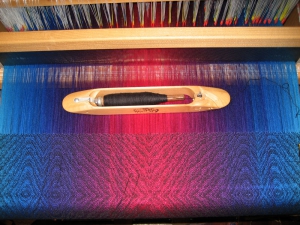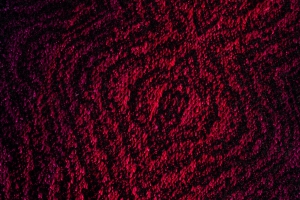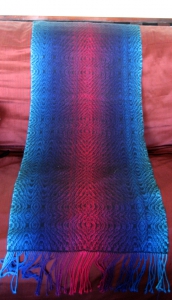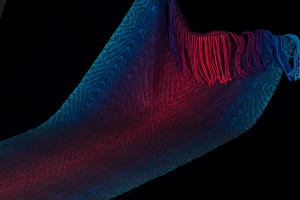The Handwoven Magazine “Not Just for Socks” reader challenge inspired this shawl, a collapse weave in two different sock yarns. I was rummaging through my stash of sock yarns for the contest, and found some Cascade Fixation, an elastic sock yarn with a crinkled appearance that reminded me of cooled lava. This, in turn, brought to mind my trip to Hawaii and the beautiful rivulets of fire in the lava flows there. So I set out to recreate the beauty of flowing lava, fiery ruffles against crinkly black stone, flecked with fire:
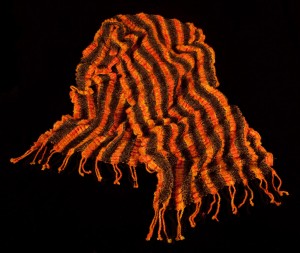
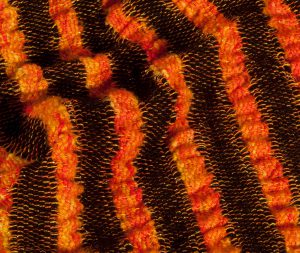
I scrunch-dyed some Knitpicks Bare sock yarn in various shades of flame (red, orange, gold, bright yellow), and warped it in stripes, alternating with 1″ sections of a black elastic sock yarn, Cascade Fixation. I warped the two yarns separately, with the Knitpicks Bare going onto my sectional warp beam, and the Cascade Fixation wound into chains, with each chain weighted separately.
I then wove several samples with different weft yarns:
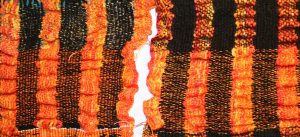
After considerable hemming and hawing, I decided that while I didn’t like the gold metallic on its own, it might add pizazz to one of the two other options. I paired it with the multicolored red-orange-yellow weft (bottom right), and loved the results so much I decided to weave up the entire shawl using 1 strand of gold metallic and 1 strand of variegated red-orange-yellow 30/2 silk.
For this shawl, because of the collapse, I used a very open sett and beat, setting both warp yarns at 8 epi and weaving at about 6 picks per inch. (Normal sett for a balanced tabby weave is 10-12 epi in most sock yarns.) It worked beautifully – the open sett/beat gave room for the elastic yarn to “do its thing”, and I got about 50% shrinkage and beautiful orange ruffles!
